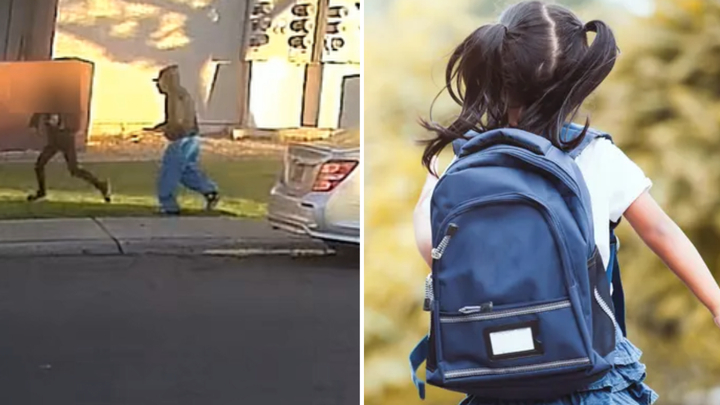Escaping Danger: Lessons in Child Safety from a Terrifying Kidnapping Attempt

Source: Fox News
Story
The harrowing incident in Glendale, Arizona, where an 11-year-old girl narrowly escaped a kidnapping attempt, highlights the urgent need for effective child safeguarding measures. Captured on a home surveillance camera, the footage shows suspect Joseph Ruiz, 37, abruptly pulling over and attempting to abduct the young girl on her way to school. Thanks to her quick thinking and ability to outrun him, she escaped unharmed. However, this incident underscores a pressing reality: child predators are an ever-present threat, necessitating proactive measures from parents, schools, and communities to protect our children.
Senses: Child Safeguarding and Protection Principles
- Sense of Alertness: Parents, educators, and community members must remain vigilant and recognize potential threats to children’s safety, especially when they are walking alone or in vulnerable situations.
- Sense of Preparedness: It’s crucial to equip children with age-appropriate safety education and training, empowering them to trust their instincts and respond effectively to dangerous situations like attempted abductions.
- Sense of Response: Children should be taught practical steps to take in dangerous situations, including seeking help and escaping from danger. Regular practice of emergency responses enhances readiness and confidence.
- Sense of Support: Utilizing resources such as technological solutions (e.g., safety buttons, location tracking) and fostering parental involvement, community support, and access to resources are essential for child protection.
- Sense of Continuity: Long-term efforts are needed to reinforce safety measures, integrating child protection principles into educational curricula, government policies, and societal norms to create a safer environment for children.
Stones: Child Safeguarding and Protection Lessons for Parents, Government, Society, and Educational Institutions
For Parents
Safety expert David Nance emphasizes that parents should be vigilant, regardless of their neighborhood’s perceived safety. Key recommendations for parents include:
- Assessing Maturity and Readiness: Evaluate whether your child is old enough to walk to school alone. Generally, children as young as eleven may still be too young for this responsibility.
- Safety in Numbers: Encourage children to walk in groups whenever possible. Safety in numbers can deter potential threats.
- Teaching Situational Awareness: Educate children to recognize and respond to suspicious behaviors. Simple practices like maintaining a relaxed 360-degree awareness and reacting to unusual activities, such as a vehicle stopping nearby, can be crucial.
- Emergency Preparedness: Equip children with lightweight alarms and instruct them on how to use them. Also, consider technological solutions like smart safety buttons that alert parents and authorities if the child is in danger.
- Open Communication: Have regular conversations with children about safety. Teach them to trust their instincts and to run and shout for help if they feel threatened.
For Government
Governments play a critical role in ensuring child safety through policy and community programs:
- Enhanced Surveillance and Patrols: Increase police presence in school zones and neighborhoods, particularly during school hours.
- Legislation: Enforce strict penalties for child predators and provide adequate funding for child protection services.
- Support Programs: Implement community programs that educate parents and children about safety and provide resources for those in need.
For Society
The broader community must also be vigilant and proactive in safeguarding children:
- Community Watch Programs: Establish and maintain neighborhood watch programs where community members can report suspicious activities.
- Public Awareness Campaigns: Conduct campaigns to raise awareness about child safety and the importance of community vigilance.
- Support Networks: Create support networks for parents and children, offering resources and a platform for sharing concerns and strategies.
For Educational Institutions
Schools are on the frontline of child safety and have a duty to ensure a secure environment:
- Safe Routes to School: Work with local authorities to design safe walking routes for students, including crossing guards and clear signage.
- Education Programs: Incorporate safety education into the curriculum, teaching children how to identify and respond to potential dangers.
- Staff Training: Ensure all school staff are trained in child safeguarding procedures and know how to handle emergencies.
Conclusion
The attempted abduction in Glendale serves as a stark reminder of the dangers children face and the collective responsibility we have to protect them. By implementing comprehensive safeguarding measures, educating our children, and fostering a vigilant community, we can create a safer environment for all. It is crucial that parents, government entities, societal structures, and educational institutions work collaboratively to establish robust child protection frameworks. Through these efforts, we can ensure that children can enjoy their childhoods without the shadow of fear and danger.
Read more about this story here: https://childreninfobank.com/safebank/as-video-shows-a-child-escaping-a-kidnapping-attempt-expert-reveals-what-parents-must-know/
Source of Image: (Glendale Police Department/iStock)





